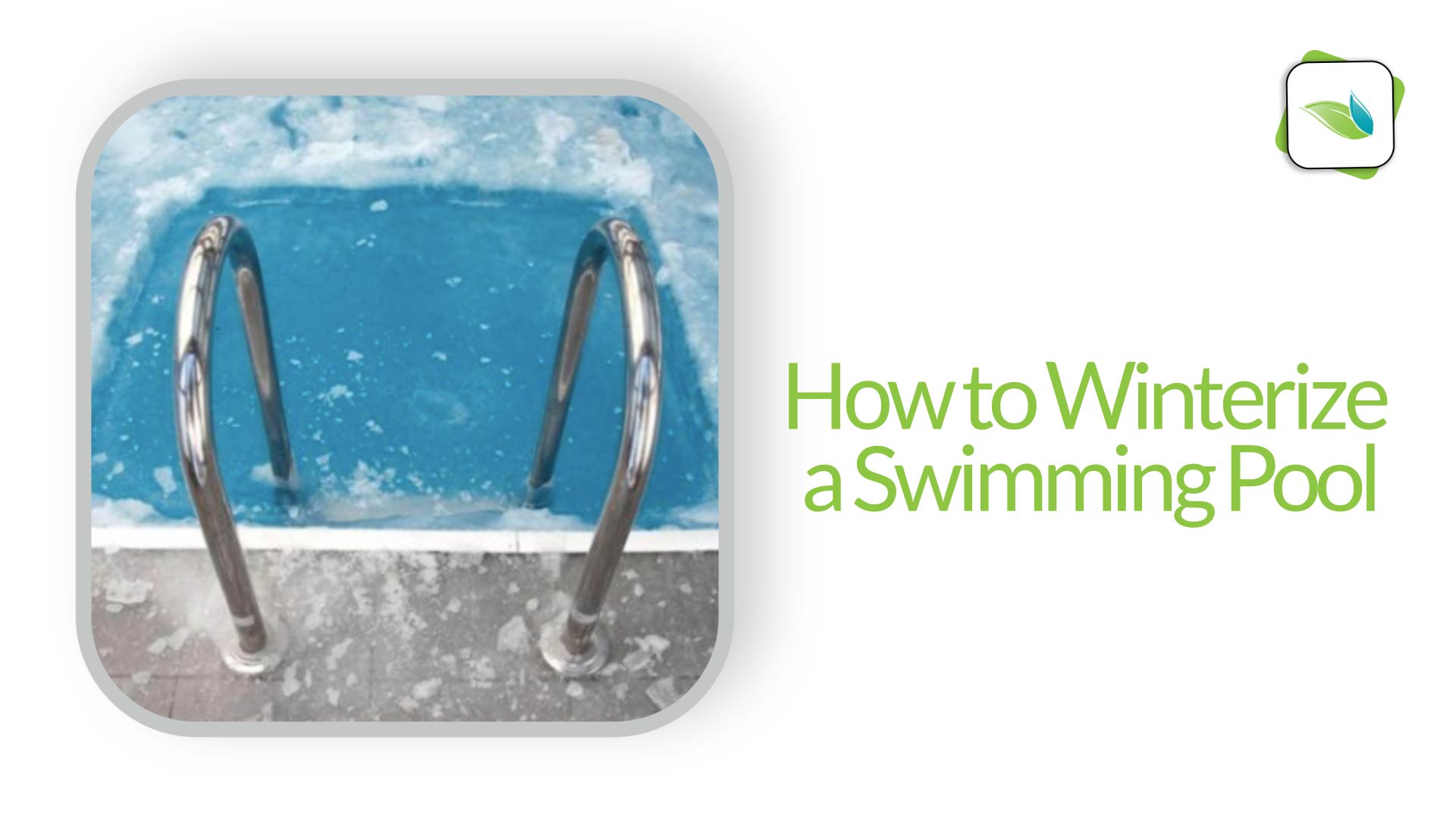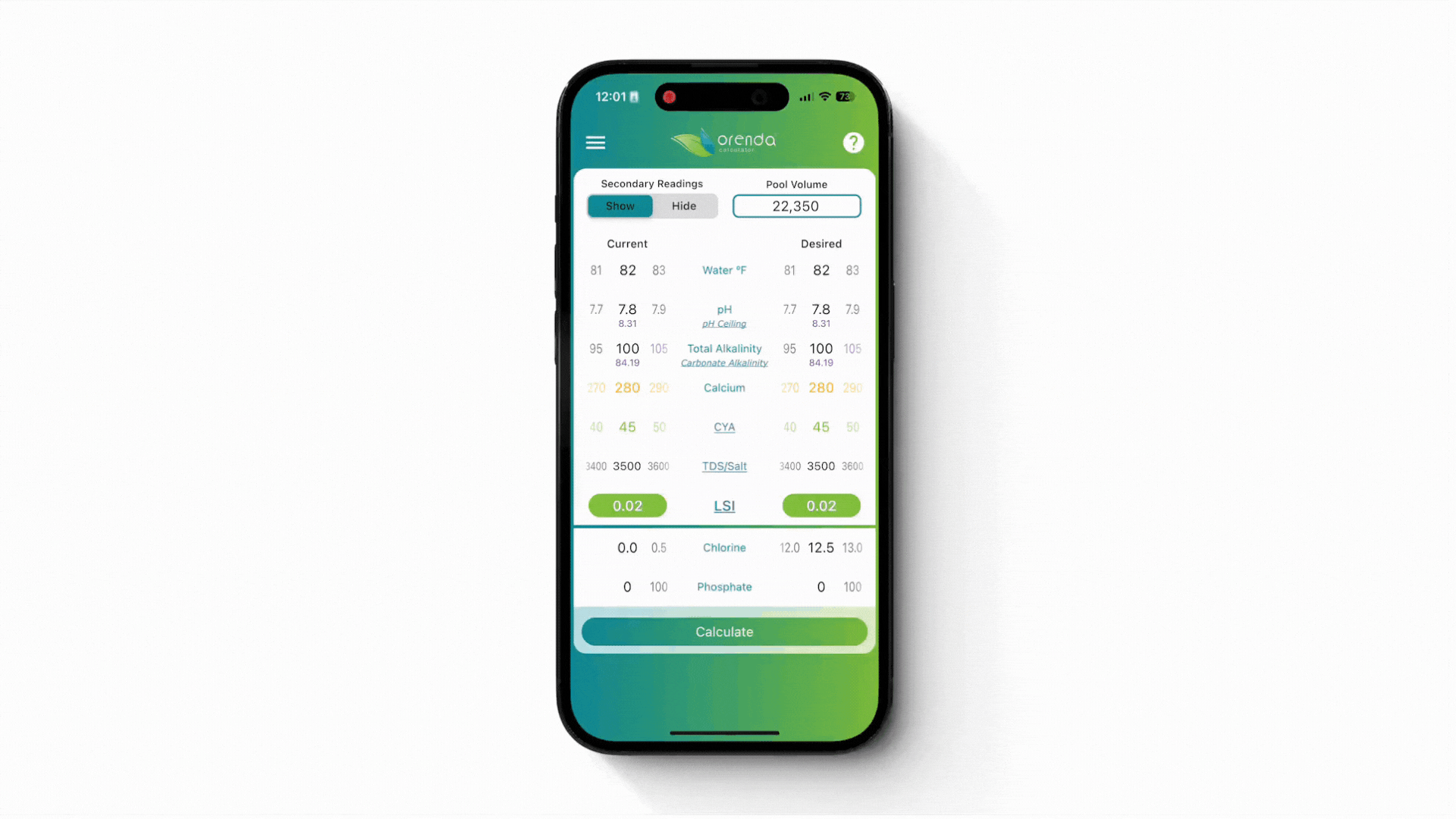How to Winterize a Swimming Pool

Closing a Pool for the Winter
Based on 10,000 gallons (37,855 Liters)
Overview
Traditional pool winterization is about cleaning the water, loading it with chemicals to prevent algae over the winter, maybe putting in some anti-freeze, blowing the water out of the pipes to prevent freeze damage, and putting on the pool safety cover. Unfortunately, most of the damage done to swimming pool surfaces occurs during the winter, and these traditional steps do not address the crux of the problem: The LSI.
The Langelier Saturation Index (LSI) shows us how cold water makes the water more aggressive and hungry for calcium (low-LSI). Traditional winterization ignores temperature, but not the Orenda winterization program. Water temperature matters! So let's be proactive and winterize by preparing for the cold water temperatures. This means feeding the pool the calcium and alkalinity it needs to survive the winter without feeding on the pool surface, causing problems like calcite crystals, winter dust, fading liners, and etching.
This procedure addresses both the proper balance of water (LSI), and the sanitization of water to prevent it from turning green and nasty.
Related: Proactive pool winterization: How to prevent crystals
Related: How to Implement the Orenda Program
You will need:
- Work gloves and a good confident attitude
- A test kit and thermometer
- Non-stabilized chlorine (liquid sodium hypochlorite or cal hypo shock)
- PR-10,000 Phosphate Remover
- CV-600 or CV-700 Enzyme
- A small amount of SC-1000 Scale & Metal Control
- Calcium chloride and/or sodium bicarbonate
- A clean bucket to dilute and pre-dissolve chemicals
At least 24 hours prior to closing day

Notice how colder temperatures drive an aggressive LSI. Adjusting calcium hardness and letting the pH rise and/or adjusting alkalinity can counterbalance this phenomenon.
- Use the Orenda App LSI calculator to determine your target chemistry, you will only be adjusting calcium hardness and pH (if necessary) the first day.
- If your pool will freeze, you will need a minimum of 400 ppm calcium hardness, but we recommend closer to 500 ppm.
- Adding the calcium progressively as the temperature drops with the span of time is preferred, but if all needs to happen fast, be mindful you might need to lower alkalinity too to put a lower ceiling in the pH and prevent a scale forming condition while the pool is closed. The type of cover will also affect how your pH can fluctuate or remain fixed after the day of closing.
- Pre-dissolve the prescribed amount of calcium chloride in a bucket of water with a few ounces of SC-1000, and add to the pool. Related: How to add calcium chloride.
- Add up to 8 oz. of PR-10,000 phosphate remover.
- Purge the pool with 1 quart (32 fl.oz.) of CV-600 or CV-700 enzymes.
Closing day
- Test water chemistry again, and ensure you have enough calcium, alkalinity, and pH to sustain LSI balance in the winter. Keep in mind that with pools that are uncovered or have mesh covers, the pH will naturally rise to its pH ceiling, thanks to physics. Pools with solid covers will not be able to off-gas CO2, and, therefore, may have a lower pH in the winter.
- Since you raised calcium on the previous visit to the pool, you can raise alkalinity now if needed by pre-dissolving sodium bicarbonate in a bucket of water and adding it to the pool. Related: How to add sodium bicarbonate. Never add calcium chloride and sodium bicarbonate/carbonate at the same time.
- Vacuum the pool and clean the filter
- Do the physical winterization procedures: lower the water level, blow out plumbing lines, cover the pool, etc.. But avoid adding anti-freeze because enzymes will conflict with them.
Additional Notes
The priority is to prepare for the cold water temperature. If you can ease the pool into the winter over multiple visits, that is even better. Same with easing the pool out of the winter in the spring. See our spring opening procedure for more information.
Video:
More Questions?
866-763-4269
